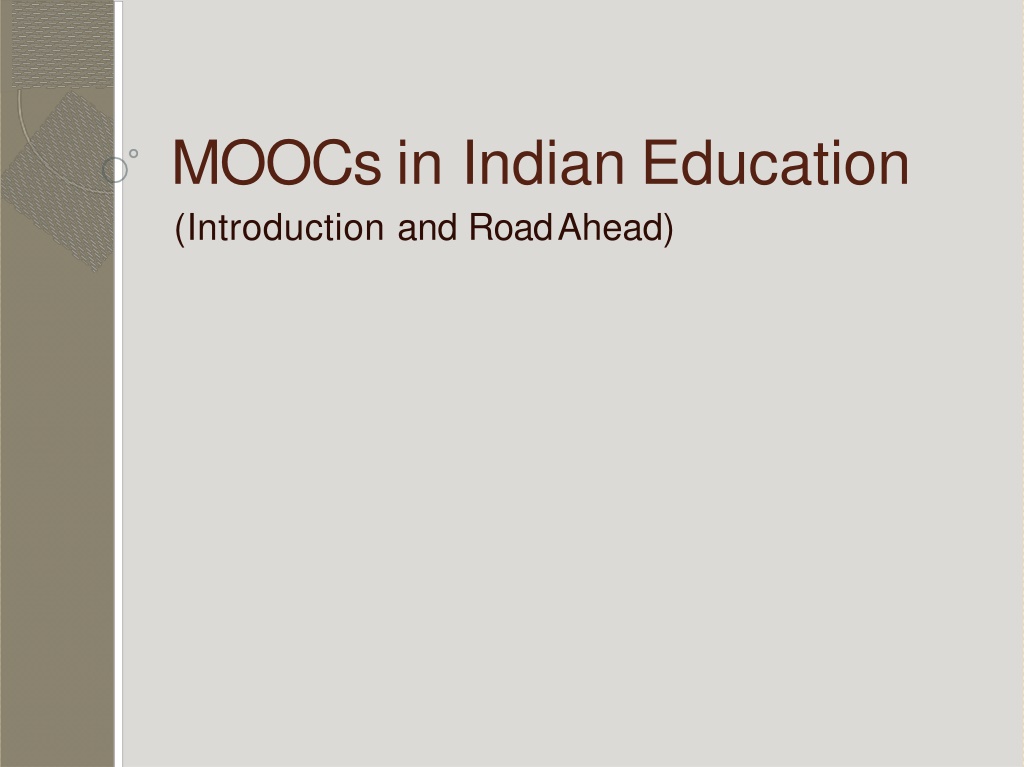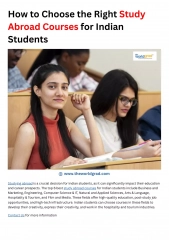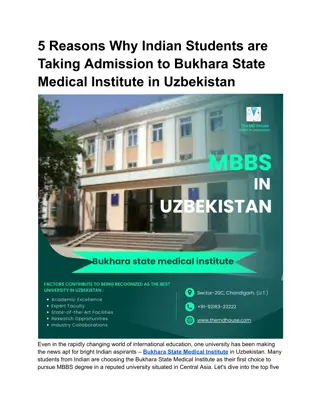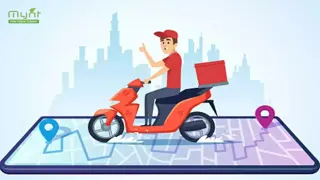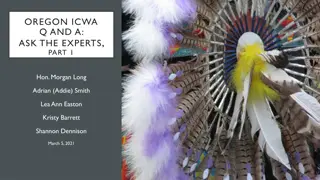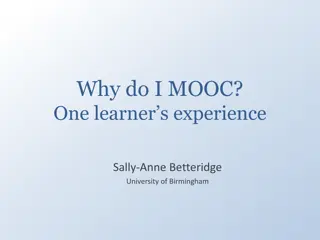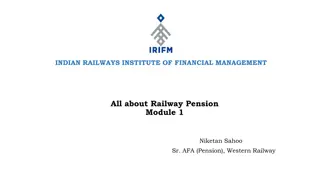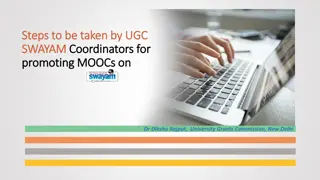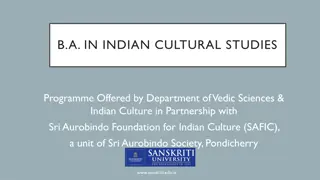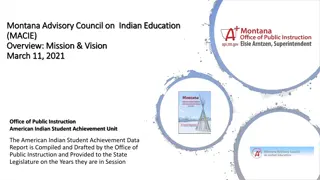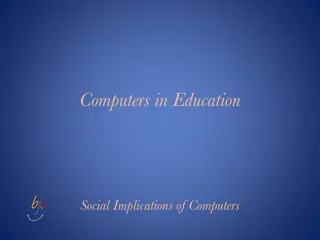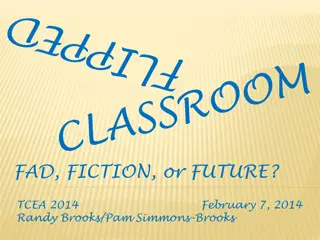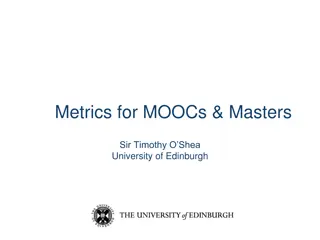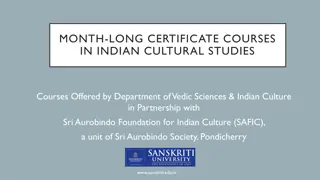MOOCs in Indian Education: Opportunities and Challenges
MOOCs (Massive Open Online Courses) have revolutionized education in India by providing innovative, flexible, and accessible learning opportunities to a wide audience. This article delves into the introduction, reach, and role of MOOC platforms like SWAYAM in Indian education. The unique features and course offerings on SWAYAM for students and teachers are highlighted, along with insights into course development and delivery. Discover how MOOCs are reshaping the educational landscape in India.
Download Presentation

Please find below an Image/Link to download the presentation.
The content on the website is provided AS IS for your information and personal use only. It may not be sold, licensed, or shared on other websites without obtaining consent from the author.If you encounter any issues during the download, it is possible that the publisher has removed the file from their server.
You are allowed to download the files provided on this website for personal or commercial use, subject to the condition that they are used lawfully. All files are the property of their respective owners.
The content on the website is provided AS IS for your information and personal use only. It may not be sold, licensed, or shared on other websites without obtaining consent from the author.
E N D
Presentation Transcript
MOOCs in Indian Education (Introduction and Road Ahead)
MOOCs refer to An innovative approach to impart education overcoming the time, age and other relevant constraints Its available for Mass and open for all It includes both credit or non credit courses It may and may not be associated with any university or institution It is not only for students but also for teachers MOOCs have a longer history than weknow
How do MOOCs reach toMass? Through online platforms Some of the platforms are free with certain limitations (MOODLE) Platforms are: MOODLE, EDX, Coursera, Khan Academy, Future Learn, Canvas, Swayam etc. Platform to prefer as a beginner: MOODLE (Modular Object Oriented DynamicLearning Environment) Platform being provided by HRD India: SWAYAM (Study Webs of Active -Learning for YoungAspiring Minds)
Role of SWAYAM in MOOCs It is the only platform recognised by Ministry of Human Resource Development of India It only facilitates to the course coordinators who are from the institutionsrecognized under section 12(B) in UGCnorms Courses on SWAYAM can only be providedafter the concerned institutional and further; expert panel approval It asks for the P .G.experience of at least five years in the concerned discipline to be a subjectexpert Courses vary in duration from 4 weeks to 6 months
Courses on SWAYAM It has Courses for Students and TeachersBoth The University who uploads the course is Host University Parent University is the one who adopt the course Only those Courses which are adopted byany university are treated as credit courses Credit courses for students provide credit pointson passing the concerned course There is no academic recognition tonon-credit courses ARPIT Courses for teachers (Six Months) provide points/certificate equivalent to one refreshercourse
Four quadrants of SWAYAM Courses: Videos and E-Contents can be self made or OERboth
Course Development Course material will be based on the fourquadrants of SWAYAM Course material can be developed with self-made content and contents which are already availableas OERs A course on SWAYAM is divided either in 40 or 30 modules A 40 module course offers 4 credit points whereas the 30 module course offers 3 credit points; to the students One module is prepared by the team ofFour; Subject Expert, Presenter, Technical Expert and Content Reviewer
Role of OpenEducational Resources in MOOCs OER consists 5 R s: Reuse, Revise, Remix, Redistribute, Retain OER is a license to use someone s contentwithout his/her priorpermission It is different from giving references and neither requires it Some of the OERs are: OER Africa, OER Asia, MIT Open Courseware, OERCommons Online Videos and E-contents used at SWAYAM platform should be plagiarism free andcollected from OER only
What are you paid with? What are you paid as a coursecoordinator? Rs. 1,00,000 if there is enrollment of more than 500 students in your course and 1stcycle of the course has beencompleted. Do other associates are paid as well? Yes,as per the SWAYAMguidelines. What are you paid as aninstitution? Atotal fund of Rs.13,50,000 is given in installments as the course development progresses. This fund is purely subjected to course developmentonly.
What is theScope? SWAYAM is running 400 courses atpresent. HRDMinistry has a distant view of running online programs. There is requirement of 10,000 courses on SWAYAM to run suchprograms SWAYAMis seeking for those 9,600 courses from the faculties across thecountry.
What can be the firststep? Join one of the ARPIT courses on SWAYAM Develop a model course onMOODLE Take a bunch of 50 Students to practice the Online Teaching Method Use some of the flipped and blendedclassroom practices in yourteaching Make well use of software available forteaching and assessment
We are late.. But, We can belatest! ThankYou!
